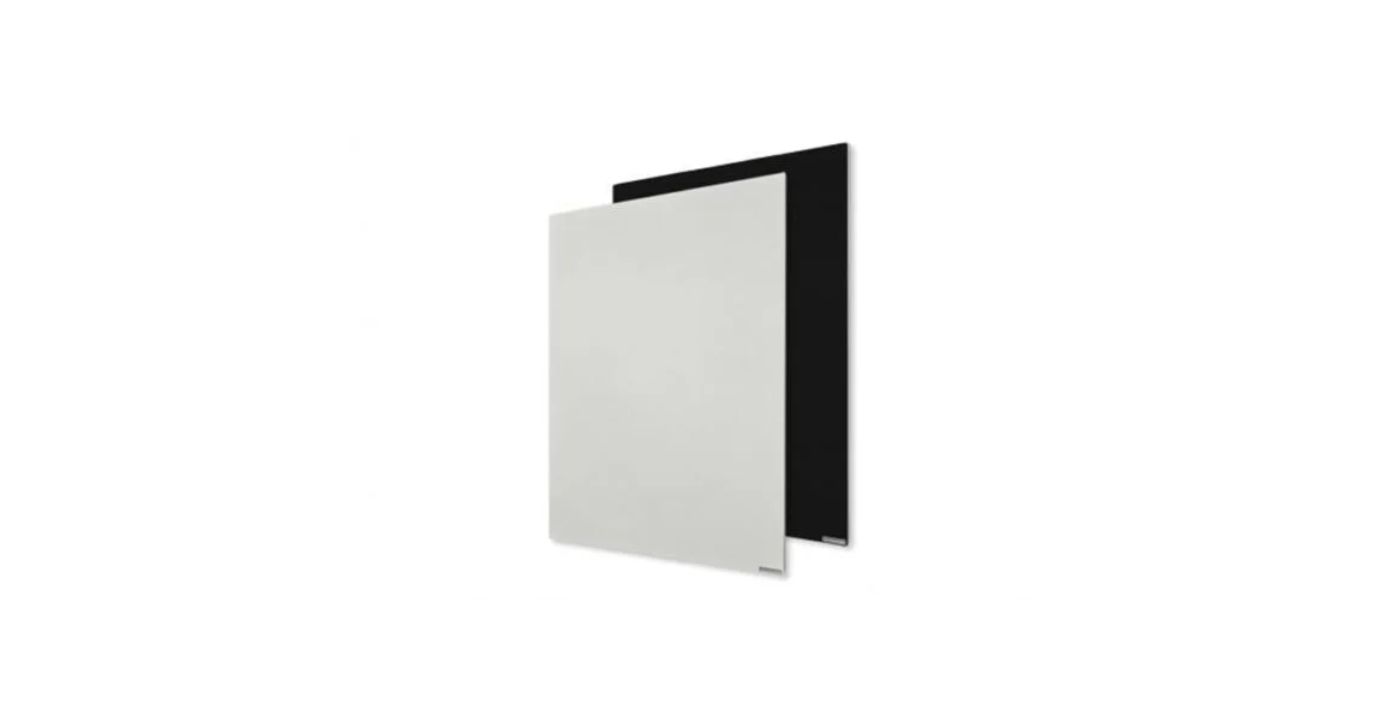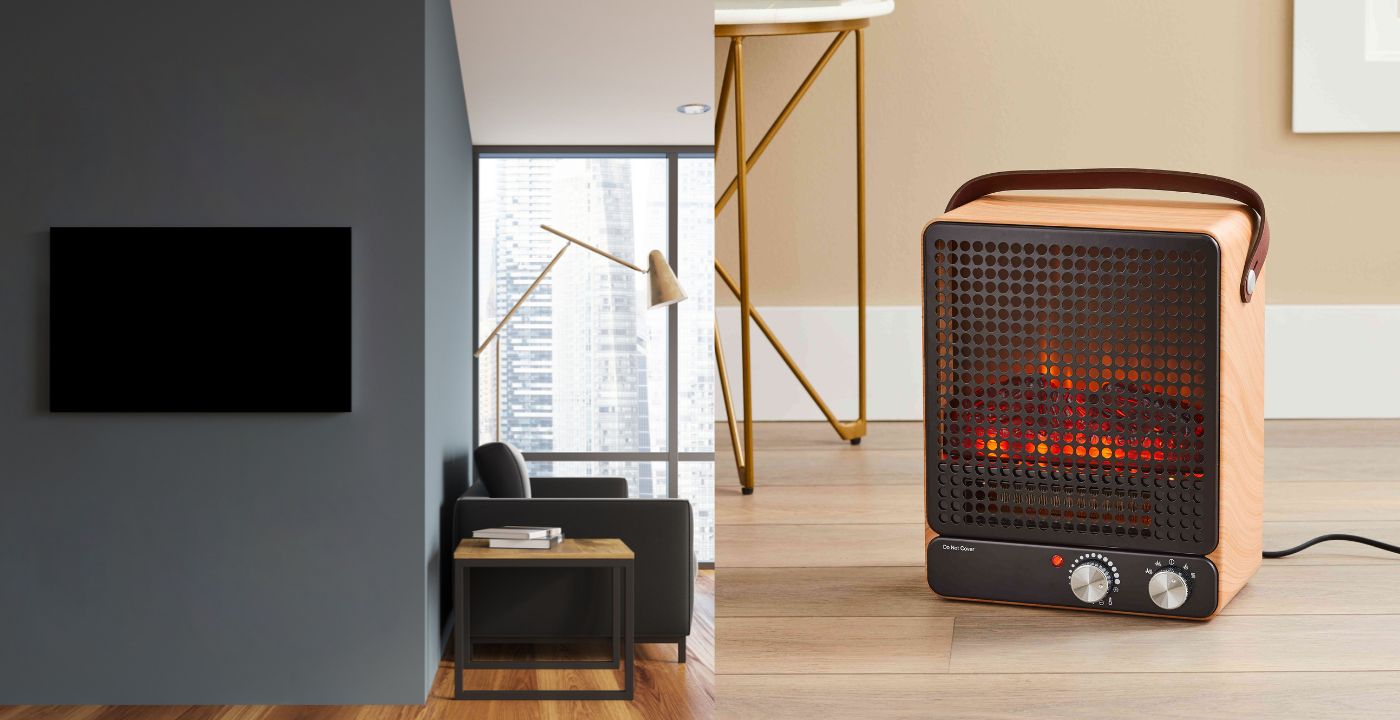Key Takeaways
- Radiant heaters are one of the most energy efficient types of heaters currently available.
- Factors such as the type of flooring, quality of insulation, and room size can impact the performance and efficiency of radiant heating systems.
- Boosting the efficiency of a radiant heating system is possible with measures like adequate insulation, using thermostatic controls, selecting effective floor coverings, and installing reflective barriers.
All electrical energy pricings are based on the latest available government information as of July 2024.
How to Calculate the Energy Consumption of Radiant Heating Systems
Radiant heating systems are considered to be more energy efficient than forced air or other traditional heating systems in most cases according to the Department of Energy.
Working out how much energy your radiant heating will use is a reasonably simple task.
Determine the Energy Input
Look for the rated power of the radiant system, often given in Watts (W) or kilowatts (kW).
For example, if you have a radiant floor heating system that operates at 1 kW, this means it uses 1 kilowatt-hour (kWh) of electricity every hour it’s running at full power.
Duration
Record the amount of time the system is operational. Let’s say it runs for 5 hours a day.
Calculate the Energy Consumption
Multiply the energy input by the duration:
Energy Consumption (kWh) = Rated Power (kW) × Duration (hours)
Using the above example:
Energy Consumption = 1kW × 5 hours = 5kWh
Estimating Electricity Expenses for Radiant Floor Heating Systems
To figure out the electricity consumption and associated cost for your radiant floor heating, follow these steps:
- Calculate the area you want to heat. This is typically about 90% of the total room size. So, multiply the room’s square footage by 0.9 to get the heated area’s square footage.
- Most radiant floor systems use about 12 watts per square foot. Multiply the value from the first step by 12 to get the total wattage.
- Convert the total wattage to kilowatts by dividing it by 1000. This gives you the kilowatts used by the heating system every hour.
- To find out the hourly cost, multiply the kilowatts used each hour by your electricity provider’s rate per kilowatt. As a point of reference, the average cost for residential electricity in the US is approximately 16.9 cents per kilowatt-hour (as of July 2023).
Example for One Room (100 square feet)
For a more workable example, let’s calculate the hourly, daily, monthly, and annual costs for a room that is 100 square feet using the average U.S. electricity rate of 16.9 cents (or $0.169) per kilowatt-hour.
- Calculate the heated area’s square footage: 100 sq ft×0.9=90 sq ft
- Determine the total wattage for the heated area: 90 sq ft×12W/sqft=1080W or 1.08kW
- Calculate the hourly cost: 1.08 kW \times $0.169/kWh = $0.1825 so the hourly cost to operate the radiant floor heating system for a 100 square foot room is approximately $0.1825 or about 18.25 cents.
- Daily Cost (for 5 hours of operation): $0.1825 × 5 = $0.9125 per day.
- Monthly Cost (for 5 hours of operation x 30 days): $0.9125 x 30 = approximately $27.375 per month.
Estimating Electricity Expenses for an Average US Home (2400 square feet)
Daily Cost = $21.93.
Monthly Cost = $657.852.
Glass Radiant Heat Panel (350W-900W)

This glass radiant heat panel comes in a range of sizes from 350W to 900W to be used in rooms ranging in size from 43 – 75 sq ft to 140 – 236 sq ft respectively.
So, for the 350W panel heating a room of 75 sq ft the figures would look like this:
- Radiant Panel Power: 350W or 0.35kW
- Electricity Rate: $0.169 per kWh
- Assumed operation time per day: 5 hours
Hourly Cost = $0.05915 or about 5.915 cents.
Daily Cost = $0.29575 or 29.575 cents.
Monthly Cost = $8.87
For the 900W panel heating a room of 236 sq ft the figures would look like this:
- Radiant Panel Power: 900W or 0.9kW
- Electricity Rate: $0.169 per kWh
- Assumed operation time per day: 5 hours
Hourly Cost = $0.1521 or about 15.21 cents.
Daily Cost = $0.7605 or 76.05 cents.
Monthly Cost = $22.82
Are You Tired Of Cold Spots And High Bills?
Mirror Radiant Heat Panel (250W-1250W)

Mirror radiant heat panels are another extremely popular model of heating panel and frequently used as bathroom wall heaters.
This model comes in a range of sizes from 250W to 1250W to be used in bathrooms (or other locations) ranging in size from 32 – 52 sq ft to 183 – 312 sq ft respectively.
Of course, if you already have a bathroom mirror you’d like to keep, there are plenty of amazing, stylized, electric bathroom heaters available to you.
So, for the 250W panel heating a room of 52 sq ft the figures would look like this:
- Radiant Panel Power: 250W or 0.25kW
- Electricity Rate: $0.169 per kWh
- Assumed operation time per day: 5 hours
The mats are strategically designed to offer even heating across the floor. When powered by your home’s electricity, these floor mats promptly heat up, providing direct warmth to the floor above.
Heated floor mats provide the advantage of localized control. Rather than depending on a central heating source, users can regulate the temperature of individual rooms or areas, optimizing energy usage while maintaining comfort.
While traditionally heated floor mats were most favored for specific rooms, like bathrooms or kitchens, recent technological advancements now allow homeowners to consider heating their entire home with these radiant floor mat systems.
Hourly Cost = $0.04225 or about 4.225 cents.
Daily Cost = $0.21125 or 21.125 cents.
Monthly Cost = approximately $6.34
For the 1250W panel heating a room of 312 sq ft the figures would look like this:
- Radiant Panel Power: 1250W or 1.25kW
- Electricity Rate: $0.169 per kWh
- Assumed operation time per day: 5 hours
Hourly Cost = $0.21125 or about 21.125 cents.
Daily Cost = $1.05625 or $1.06
Monthly Cost = $31.69
Is Radiant Heating More Efficient than Traditional Heating?
Radiant heating systems provide warmth by directly heating objects and people in its path using infrared radiation.
In contrast, traditional heating methods, such as forced-air systems, warm the surrounding air.
The direct approach of radiant heating tends to be more efficient because:
Direct Heat Transfer:
Radiant heating provides direct warmth, minimizing energy loss.
Even Distribution:
Cold spots are minimized, creating a consistent temperature throughout the space.
No Duct Losses:
Unlike forced-air systems, there’s no loss of heat through ducts, increasing overall efficiency.
Radiant heating systems operate at 100% whereas traditional convection heating systems will only operate at about 80% efficiency.
Are Radiant Heaters More Efficient than Space Heaters?

Radiant heaters are more efficient than space heaters. There are no two ways about it.
Space heaters are designed to provide warmth to a localized area and can be energy-draining, especially if tasked with heating large spaces.
In contrast, radiant heaters offer a more uniform heat distribution, efficiently warming larger areas.
And, as with furnaces, space heaters lose a significant amount of energy because they heat the air in a room rather than heating objects and people directly.
Can I Make Radiant Heat Work More Efficiently?
Certainly! Radiant heating is already a rather efficient system, but there are steps you can take to enhance its efficiency even more.
Here are some strategies to ensure that you get the most out of your radiant heating system:
Proper Insulation:
One of the most effective ways to enhance the efficiency of any heating system, including radiant heating, is to ensure proper insulation.
Well-insulated walls, ceilings, and floors will help to keep the heat inside the house, thus reducing the energy required to maintain a comfortable temperature.
Thermostatic Controls:
Use programmable thermostats or zone-based thermostatic controls.
These allow you to heat only the rooms you’re using and to set a heating schedule based on your routine.
For example, reduce the heat during the night or when you’re not at home.
Optimize Floor Coverings:
The type of floor covering you use can affect how quickly and efficiently the heat radiates into the room.
Ceramic tiles, stone, and concrete are the most effective at transmitting radiant heat, while thick carpets can insulate against it.
If you want to use carpet, consider a thin variety with dense padding.
Avoid Blocking Radiant Panels:
If you have radiant panels on your walls or ceilings, make sure they’re not blocked by furniture or drapes. This can impede the flow of radiant energy into the room.
Invest in Reflective Barriers:
Installing reflective barriers beneath radiant heating systems can help reflect more heat upwards, making the system more efficient.
Incorporating these tips can make your radiant heating system even more energy-efficient, translating to energy savings and a more comfortable living environment.
FAQs
How long does it take for a radiant heating system to warm up a room?
The warm-up time varies depending on the type of radiant system, room size, and insulation quality.
Generally, radiant floor systems might take a bit longer to feel warm compared to other systems, but they retain heat better and more efficiently once warmed up.
Does the type of flooring over radiant heat systems impact its efficiency?
Yes, the type of flooring you choose can influence the efficiency of your radiant heating system.
Materials with good thermal conductivity, such as tile and stone, transfer heat more efficiently than those with poor conductivity, like thick carpets or certain types of wood.
When heat can move easily through the flooring material, the room warms up more quickly and uniformly.
If you’re choosing flooring specifically for use with radiant heating, it’s crucial to select materials known for their heat-conducting properties.
If you prefer wood or laminate, look for types specially designed or suitable for radiant heat to ensure the system operates at its best efficiency.
How does insulation affect the efficiency of my radiant heating system?
Insulation plays a pivotal role in the efficiency of any heating system, including radiant heaters.
Proper insulation reduces the amount of heat that escapes from your home, ensuring that the warmth produced by the radiant heating system stays inside and keeps your living spaces comfortable.
Without adequate insulation, the radiant heating system will need to work harder and longer to achieve the desired temperature, consuming more energy in the process.
Investing in high-quality insulation, especially in walls, ceilings, and floors, can help your radiant heating system work at its optimal efficiency, saving on energy costs in the long run.
Conclusion
Radiant heating systems are a modern solution for those looking to efficiently warm their living spaces.
Their direct heating method provides consistent warmth, potentially leading to energy savings in the long run.
However, the efficiency and costs are influenced by various factors, including the system’s type, room size, and regional electricity rates.
Before making a decision, one should consider all these factors and potentially consult with a heating expert to determine the most suitable system for their needs.
If you are keen to get started with radiant heating in your home get a quote today.






